Civil bureaucracy plagued by in-situ
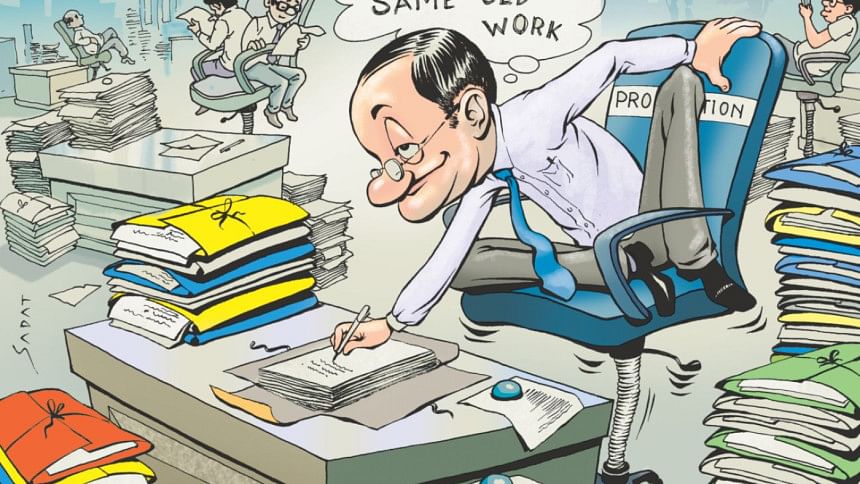
The government move to promote around 300 officials would see a further rise in the number of in-situ officials in the civil administration.
This time, promotions would be given to the ranks of additional, joint and deputy secretaries apparently to ease commotion among the “deprived” officials, who were denied promotions several times, said Secretariat sources.
These promotees will add to the number of around 1,000 in-situ officials -- from deputy secretaries to additional secretaries -- in 39 ministries and 20 divisions of the government.
Though the term “in-situ” was very uncommon in Bangladesh's civil administration before 2001, it has now become an integral part of the country's civil bureaucracy.
According to Cabinet Secretary Mohammad Shafiul Alam, the term “in-situ” has been there in bureaucracy since the British era.
“Its necessity was very little at that time. But now the number of officials has surpassed that of posts, and that is why the term is being used widely,” he told The Daily Star.
During the British rule in the Indian subcontinent, the concept of in-situ was rarely applied in civil bureaucracy. It was used only when the ground reality didn't allow an official to join his new office immediately after getting promoted.
The official had to wait for weeks or even months to join the new office, and he used to be called an in-situ official during that period.
In-situ is a Latin phrase which means "on site" or "in position".
An in-situ official is someone who continues to hold the same office and perform the same duties even after being elevated to a higher position.
The number of in-situ officials has risen because wholesale promotions were given in the top tiers of the administration and new posts were not created to accommodate the promoted officials, said Secretariat sources.
Many officials at the Secretariat introduce themselves as in-situ officials. They enjoy perks and salaries higher than that before but hold their previous office.
There are 416 additional secretaries against 120 posts, 908 joint secretaries against 350 posts and 1,301 deputy secretaries against 830 posts. And most of them are in-situ officials.
Former secretary Ali Kabir said they didn't hear about in-situ officials when he joined Bangladesh Civil Service in the first regular batch in 1979.
In recent months, the government created a few posts. But it faced difficulties in accommodating all the promoted officials. And now many joint secretaries are working as deputy secretaries, and many additional secretaries as joint secretaries.
Usually, deputy secretaries become project directors, but nowadays joint secretaries are becoming PDs. Joint secretaries are also being assigned to monitor development projects, which was never seen in the past, said Secretariat sources.
An excessive number of additional secretaries now crowd different ministries, which is unusual, they added.
For example, a joint secretary is always appointed head of the research wing of the agriculture ministry. Its head, Joint Secretary Syeda Afroza Begum, became additional secretary in April last year, but she still holds the same position.
Having the rank of deputy secretary, Dhaka Deputy Commissioner Tofazzal Hossain Miah and Narayanganj DC Anisur Rahman Miah were made joint secretaries but they still hold their previous positions.
WHY SO MANY IN-SITU OFFICIALS?
Some retired bureaucrats said additional recruitments in three BCS batches is one of the main reasons behind the rise in the number of in-situ officials.
Some 1,650 officials -- 650 in '83, 450 in '84 and 550 in '85 -- were recruited in the three batches whereas 150-250 officials are usually recruited in one batch for the admin. Most of these officials now hold the posts of secretary, additional secretary and joint secretary.
“The problem of in-situ officials will continue until these officials retire,” observed Abdus Sobhan Sikder, former principal secretary to the Prime Minister's Office.
He said many officials became in-situ ones when an additional number of officials were promoted following the BNP-led government's assumption of office in 2001.
More than a hundred officials were promoted to the rank of additional secretary from joint secretary at one go on political considerations in 2002, he told this correspondent.
Secretariat sources said it was the interest of the ruling party and the officials that led to the promotion of many officials in the past.
The government wanted to get the support of bureaucrats by giving them promotion, while the latter pressed for promotion in-exchange for that, added the sources.

 For all latest news, follow The Daily Star's Google News channel.
For all latest news, follow The Daily Star's Google News channel. 

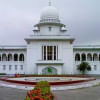
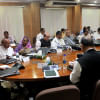

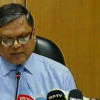
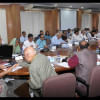


Comments